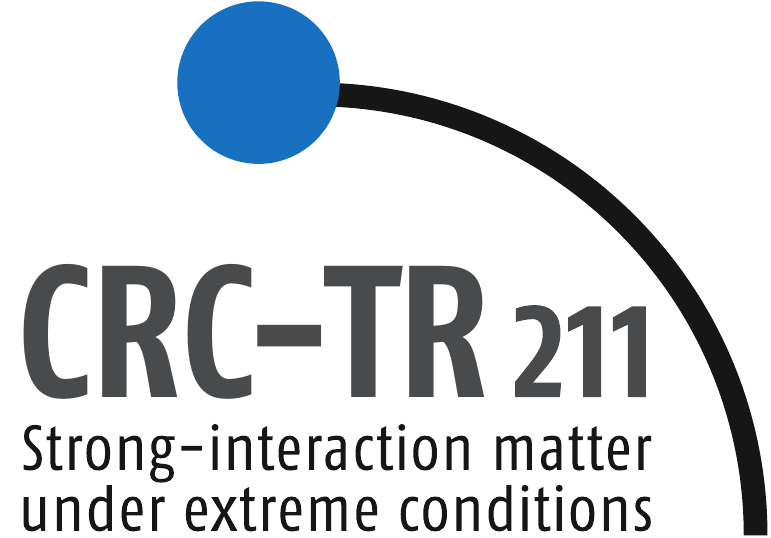\( \newcommand{\dd}{\mathrm{d}} \) \(
\DeclareMathOperator{\sign}{sign} \) \(
\newcommand{\pvec}[1]{\vec{#1}^{\,\prime}} \) \(
\newcommand{\R}{\mathbb{R}} \)
\( \newcommand{\dd}{\mathrm{d}} \) \(
\DeclareMathOperator{\sign}{sign} \)

 Nuclear Physics
Colloquium
Nuclear Physics
Colloquium
Venue: Physics Building, Max-von-Laue-Str. 1,
PHYS __.102
Time: Friday, July 19, time 11am (s.t.)
Contact: hees@itp.uni-frankfurt.de
Correlations in a strongly coupled charged
fluid far from equilibrium subjected to an external magnetic field
Casey Cartwright (Alabama University)
In this talk I will consider a holographic
model of a charged strongly coupled system of many particles. The system
is thermalizing from an anisotropic initial charged state far from
equilibrium towards equilibrium while subjected to a constant external
magnetic field. I will discuss the time evolution of 2-point and 1-point
correlation functions (of selected operators) within this thermalizing
system. A main result of our consideration is that thermalization times
for 2-point functions are significantly (approximately three times) larger
than those of 1-point functions. Magnetic field and charge amplify this
difference, generally increasing thermalization times. However, there is
also a competition of scales between charge density, magnetic field, and
initial anisotropy, which leads to an array of qualitative changes on the
2- and 1-point functions. There appears to be a strong effect of the
medium on 2-point functions at early times, but approximately none at
later times. At strong magnetic fields, an apparently universal
thermalization time emerges, at which all 2-point functions appear to
thermalize regardless of any other scale in the system. Hence, this time
scale is referred to as saturation time scale. As extremality is
approached in the purely charged case, 2- and 1-point functions appear to
equilibrate at infinitely late time. Our results can be taken to model
thermalization in heavy ion collisions, or thermalization in selected
condensed matter systems.
Nuclear
Physics Colloquium Homepage

 Nuclear Physics
Colloquium
Nuclear Physics
Colloquium 
 Nuclear Physics
Colloquium
Nuclear Physics
Colloquium